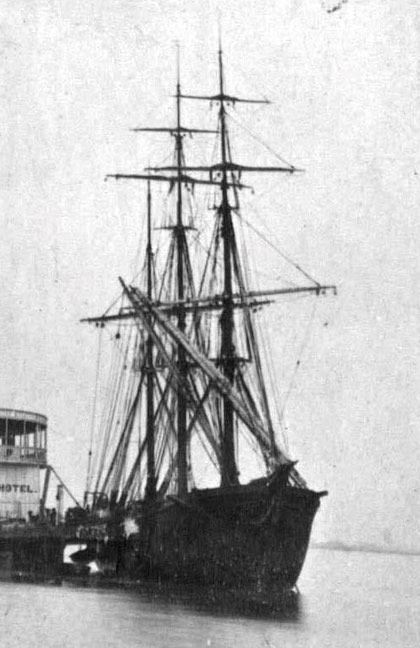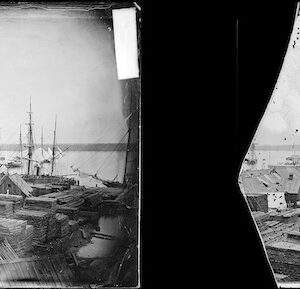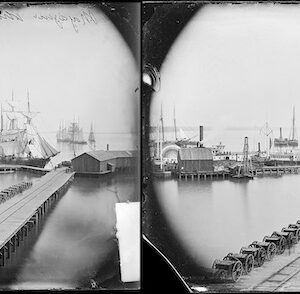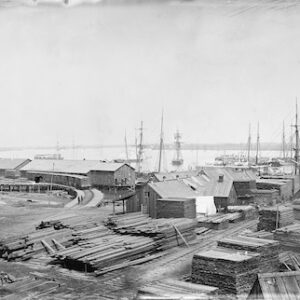Tag: barque
 Wikipedia says: A barque, barc, or bark is a type of sailing vessel with three or more masts having the fore- and mainmasts rigged square and only the mizzen (the aftmost mast) rigged fore and aft. Sometimes, the mizzen is only partly fore-and-aft rigged, bearing a square-rigged sail above.
Wikipedia says: A barque, barc, or bark is a type of sailing vessel with three or more masts having the fore- and mainmasts rigged square and only the mizzen (the aftmost mast) rigged fore and aft. Sometimes, the mizzen is only partly fore-and-aft rigged, bearing a square-rigged sail above.
In the 18th century, the British Royal Navy used the term bark for a nondescript vessel that did not fit any of its usual categories. Thus, when the British admiralty purchased a collier for use by James Cook in his journey of exploration, she was registered as HM Bark Endeavour to distinguish her from another Endeavour, a sloop already in service at the time. She happened to be a ship-rigged sailing vessel with a plain bluff bow and a full stern with windows.
William Falconer’s Dictionary of the Marine defined “bark”, as “A general name given to small ships: it is however peculiarly appropriated by seamen to those which carry three masts without a mizzen topsail. Our Northern Mariners, who are trained in the coal-trade, apply this distinction to a broad-sterned ship, which carries no ornamental figure on the stem or prow.”
By the end of the 18th century, the term barque (sometimes, particularly in the US, spelled bark) came to refer to any vessel with a particular type of sail-plan. This comprises three (or more) masts, fore-and-aft sails on the aftermost mast and square sails on all other masts. Barques were the workhorse of the golden age of sail in the mid-19th century as they attained passages that nearly matched full-rigged ships, but could operate with smaller crews.
The advantage of these rigs was that they needed smaller (therefore cheaper) crews than a comparable full-rigged ship or brig-rigged vessel, as fewer of the labour-intensive square sails were used, and the rig itself is cheaper. Conversely, the ship rig tended to be retained for training vessels where the larger the crew, the more seamen were trained.
Another advantage is that, downwind, a barque can outperform a schooner or barkentine, and is both easier to handle and better at going to windward than a full-rigged ship. While a full-rigged ship is the best runner available, and while fore-and-aft rigged vessels are the best at going to windward, the barque and the barquentine, are compromises, which combine, in different proportions, the best elements of these two.
Whether square-rig, barque, barquentine or schooner is optimal depends on the degree to which the sailing-route and season can be chosen to achieve following-wind. Square-riggers predominated for intercontinental sailing on routes chosen for following-winds.
Most ocean-going windjammers were four-masted barques, due to the above-described considerations & compromises. Usually, the main mast was the tallest; that of Moshulu extends to 58 m off the deck. The four-masted barque can be handled with a surprisingly small crew—at minimum, 10—and while the usual crew was around 30, almost half of them could be apprentices.
Showing all 3 results


